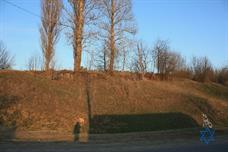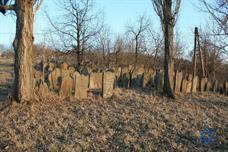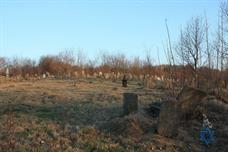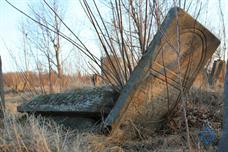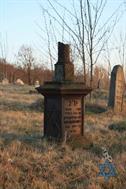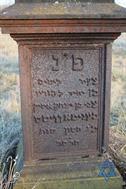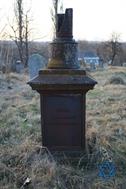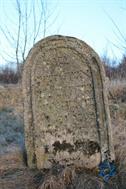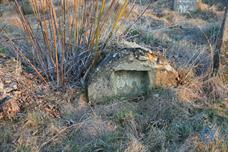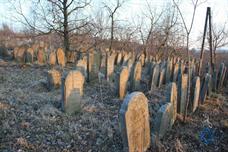Stanislavchik
 |
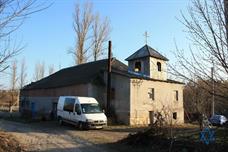 |
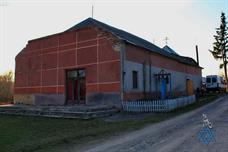 |
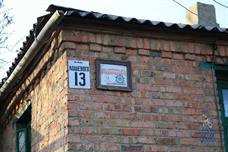 |
| road to Stanislavchik | Synagogue converted into a church | ||
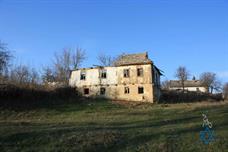 |
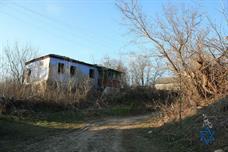 |
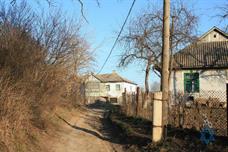 |
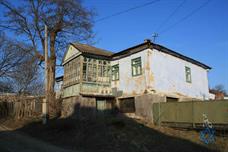 |
| The Jewish quarter | During the occupation was the ghetto here | ||
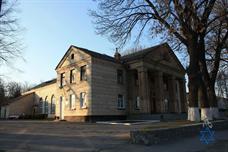 |
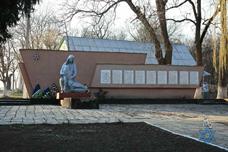 |
||
Stanislavchik, 2012
Stanislavchik - one of the oldest settlements of Podillya in Ukraine. In historical documents of the 16th century the village was called YUSHKOV. The population was engaged in pottery, fishing and its processing. Perhaps, hence the name of the village (soup - fish stew). During the Tatar attack the village was destroyed in the early 17th century, there emerged a new settlement Chagarin.
After the reunification of the Right-Bank Ukraine and Russia, the owner of the village became Podolsk Bakhmetyev governor, who received it as a gift from Stanislas Potocki and called it Stanislavchik. Concerned about the growth of income from their farms, Bakhmetyev invited from nearby towns - Jewish craftsmen and traders from Bara, Shargorod, Kopaygoroda, Braila, Nemerov. Jews discovered there shops and stalls. Stanislavchik becomes borough.
At the entrance and exit of Stanislavchik was a tavern where you can have a meal, drink a glass of and spend the night. The tavern was a kind of center, like inn. In 1802 Stanislavchik in and around it there were 18 inn.
As of December 1864 the town lived Jewish men - 102 people, zhenschinin - 100 in Stanislavchik there are already more than 5 thousand According to the 1897 census, including the Jews - 1207.
In 1905, two Jewish prayer school year already in operation and the Jewish school "Talmud Torah".
After the reunification of the Right-Bank Ukraine and Russia, the owner of the village became Podolsk Bakhmetyev governor, who received it as a gift from Stanislas Potocki and called it Stanislavchik. Concerned about the growth of income from their farms, Bakhmetyev invited from nearby towns - Jewish craftsmen and traders from Bara, Shargorod, Kopaygoroda, Braila, Nemerov. Jews discovered there shops and stalls. Stanislavchik becomes borough.
At the entrance and exit of Stanislavchik was a tavern where you can have a meal, drink a glass of and spend the night. The tavern was a kind of center, like inn. In 1802 Stanislavchik in and around it there were 18 inn.
As of December 1864 the town lived Jewish men - 102 people, zhenschinin - 100 in Stanislavchik there are already more than 5 thousand According to the 1897 census, including the Jews - 1207.
In 1905, two Jewish prayer school year already in operation and the Jewish school "Talmud Torah".
In 1920, unified labor school, the school created a new national school reform was carried out, was created. The Jewish Labor School worked Mirovich (obviously Meerovitch) Dora Moiseevna. As of 1 January 1927. School studied 40 boys and 51 girl.
Under the Soviets created the Jewish National Council, which is chaired by Dernis Meyer was elected in June 1926, and the Secretary - Vovsyaniker. In the 30s of the chairmen of the Jewish Council was Ida Seltzer, and later - Pinya Auburn. In 1923. Stanislavchik became a district center in the village of large fairs are held around the town hall. The town hall was a lot of shops, where they sold iron hardware, agricultural implements, food. The fair was very noisy and ran to the fire, and there was tarovitsa, where they sold the cattle.
In 1929 a brick synagogue, a further hut-reading room was closed. In the 30s of the second synagogue (at the bottom, near the well) it was transformed into a regional cultural center, and then a cinema. In 2005. Theater returned to the Orthodox Church Kiev Patriarchate.
In January 1930 Stanislavchik created Jewish national collective agricultural marketing cooperative "Der Yidisher Pojer". The situation of the local population has deteriorated sharply. In 1933, the year of the famine, we ate plum pits, which were collected in a rural garden. There were cases when children lured and then killed them for meat. Parents have been warned to be careful.
Under the Soviets created the Jewish National Council, which is chaired by Dernis Meyer was elected in June 1926, and the Secretary - Vovsyaniker. In the 30s of the chairmen of the Jewish Council was Ida Seltzer, and later - Pinya Auburn. In 1923. Stanislavchik became a district center in the village of large fairs are held around the town hall. The town hall was a lot of shops, where they sold iron hardware, agricultural implements, food. The fair was very noisy and ran to the fire, and there was tarovitsa, where they sold the cattle.
In 1929 a brick synagogue, a further hut-reading room was closed. In the 30s of the second synagogue (at the bottom, near the well) it was transformed into a regional cultural center, and then a cinema. In 2005. Theater returned to the Orthodox Church Kiev Patriarchate.
In January 1930 Stanislavchik created Jewish national collective agricultural marketing cooperative "Der Yidisher Pojer". The situation of the local population has deteriorated sharply. In 1933, the year of the famine, we ate plum pits, which were collected in a rural garden. There were cases when children lured and then killed them for meat. Parents have been warned to be careful.
Years of repression also affected the Jews. In 1938 he was repressed and shot Meer Dernis and Neeson Wachs. (In 1957, rehabilitated.)
In 1933. I went to study in the first class of the Jewish school, where he studied for two years. My teachers were L. Rose and Riva losifovna. The school was located on the main street, in the average home of three of the same type, built in 1892 by three brothers.
Soon Jewish school was liquidated. Students were transferred to the Ukrainian-ten-year school in the class below. In the prewar years, the school directors were: Prikhodko, Movchan, Zadunay, head teacher - Dougan. The first edition was held in 1937. The second issue was relatively a lot of Jewish children - Ya Shamis, M. Kroytman, Koifman, T.Yudchak, J. Guralnik, C. Shteyngrud, I.Mekabel. Later they all learned in high schools.
Military training was introduced before the war in schools. Some families had their masks. In agriculture, the park district sports competitions were held, delivery standards TRP, GSO PVHO.
In 1933. I went to study in the first class of the Jewish school, where he studied for two years. My teachers were L. Rose and Riva losifovna. The school was located on the main street, in the average home of three of the same type, built in 1892 by three brothers.
Soon Jewish school was liquidated. Students were transferred to the Ukrainian-ten-year school in the class below. In the prewar years, the school directors were: Prikhodko, Movchan, Zadunay, head teacher - Dougan. The first edition was held in 1937. The second issue was relatively a lot of Jewish children - Ya Shamis, M. Kroytman, Koifman, T.Yudchak, J. Guralnik, C. Shteyngrud, I.Mekabel. Later they all learned in high schools.
Military training was introduced before the war in schools. Some families had their masks. In agriculture, the park district sports competitions were held, delivery standards TRP, GSO PVHO.
So come 1941. The war began.
From the first days of the war mobilization was declared. We started to prepare for the evacuation and in our town. The collective farm horses distributed in families, but the Jews were not in a hurry. It was possible to evacuate the family Wachs Itzik, uchitilnitse Kroytman Sarah, but Voroshilovke they overtook the Germans and they were killed. Safely evacuated only barber family Lemberg Itzik. The Germans entered the village July 17, 1941. I am with my teacher Nikolai Minolovichem Frantsevich stood in the center of the village and see everything that happens. There was a motorcycle convoy and headed for the village park, the second column in veterinary hospitals. Near our house, in a former military enlistment office building is located, obviously, headquarters. The Germans turned the park: a room occupied executive committee, district committee of the party. The two-storey school housed the field hospital. The hospital got wounded Germans and Soviet prisoners of war. school yard is turned into a military cemetery, he was gay German birch crosses, according to the epitaph, he was buried here and Soviet soldiers. After the war, the remains of Soviet soldiers were reburied in a mass grave.
The village was established occupation regime. People were afraid to go out, especially the Jews. the local administration has been established. Warden village became Tsuyman Gury Vasilyevich (former priest, veterinarian), later became warden Glavatsky Peter. Police led by Vasily Fedorchuk (former firefighter), the police - Ivan Boiko, Savulyak and others. Police on the left sleeve wear yellow and blue armband.
From the first days of the war mobilization was declared. We started to prepare for the evacuation and in our town. The collective farm horses distributed in families, but the Jews were not in a hurry. It was possible to evacuate the family Wachs Itzik, uchitilnitse Kroytman Sarah, but Voroshilovke they overtook the Germans and they were killed. Safely evacuated only barber family Lemberg Itzik. The Germans entered the village July 17, 1941. I am with my teacher Nikolai Minolovichem Frantsevich stood in the center of the village and see everything that happens. There was a motorcycle convoy and headed for the village park, the second column in veterinary hospitals. Near our house, in a former military enlistment office building is located, obviously, headquarters. The Germans turned the park: a room occupied executive committee, district committee of the party. The two-storey school housed the field hospital. The hospital got wounded Germans and Soviet prisoners of war. school yard is turned into a military cemetery, he was gay German birch crosses, according to the epitaph, he was buried here and Soviet soldiers. After the war, the remains of Soviet soldiers were reburied in a mass grave.
The village was established occupation regime. People were afraid to go out, especially the Jews. the local administration has been established. Warden village became Tsuyman Gury Vasilyevich (former priest, veterinarian), later became warden Glavatsky Peter. Police led by Vasily Fedorchuk (former firefighter), the police - Ivan Boiko, Savulyak and others. Police on the left sleeve wear yellow and blue armband.
The Jewish community was headed Shteyngrud Noah. All Jews over eleven years, was ordered to be worn on the left sleeve white armband embroidered with blue thread on it or draw an indelible pencil shield of David. We drove on different works. We in the former collective farm worked harvesting vegetables, sugar beet. I remember when I picked up a horse in the water barrel in the German canteen. Passing by a young man who knew me in school, told the German that I Yuda. I was scared, fled and hid in the night garden, close to the Veterinarians.
September 8, 1941. was a raid on the Jewish homes. It was attended came from western Ukraine Bendera, the SS, the police. Of all the homes were taken, especially food. All Jewish property were brought to the police.
The territory of Ukraine, between the Dniester and Southern Bug, was handed over to Romania. This province was called Transnistria. When Romanians all Jews over the age of 11 years had worn no longer a bandage on his left sleeve, and a distinctive sign on the left side of the chest in a black cloth mug with a six-pointed star of yellow cloth. MTS office building located near the Romanian Gendarmerie. Praetor (district administrator) took the building of the former executive committee.
September 8, 1941. was a raid on the Jewish homes. It was attended came from western Ukraine Bendera, the SS, the police. Of all the homes were taken, especially food. All Jewish property were brought to the police.
The territory of Ukraine, between the Dniester and Southern Bug, was handed over to Romania. This province was called Transnistria. When Romanians all Jews over the age of 11 years had worn no longer a bandage on his left sleeve, and a distinctive sign on the left side of the chest in a black cloth mug with a six-pointed star of yellow cloth. MTS office building located near the Romanian Gendarmerie. Praetor (district administrator) took the building of the former executive committee.
In October 1941, Stanislavchik arrived exiles from Bukovina and Bessarabia. They were placed among local Jews. We lived Druckman German family (5 pers.) From Vizhnitsa. It was very crowded, but all lived together amicably. In spring 1942 the ghetto was established. It was situated on the territory of the former House of Culture. This western part of the village shielded by barbed wire. Our family had to move because our house did not fall under the area of the ghetto. The ghetto was left alone artisans, professionals to serve the local population. The remaining Jews were moved to the territory of the former cattle farm near the village Noskovtsy. This area is called Lull. Farm itself was destroyed, with no windows or doors. People living in calm, wandered from village to village, hired for any job, exchanged for food their latest stuff. They searched the land remained frozen potatoes, beets. Supervised this camp Shtivelman Loew, who, after release for cruelty to people judged. From cold and hunger many died over the winter. Some tried to get into the ghetto Stanislavchikskoe. I remember, as a new police chief Lyahetsky met who was walking out of a lull, and began to beat him with his whip, sitting on a horse. Then drove into the water under the bridge (near the fire). The second case. My childhood friend Shtendler of June came from a lull in Stanislavchik. It was zimoy1943 year. Noticing riding Romanians, he sweat, hiding in deep snow. I caught cold and died. Few of the inhabitants waited for a lull Victory.
Now more about Stanislavchikskom ghetto. Chef ghetto was appointed Dr. Arthur Kula, his deputy, Dr. Koch, the police - Badia. All of them were from Czernowitz, well known Romanian. The Jewish Committee was part of our former pharmacist Slobodyanskii Joseph Markovich. Translators in gendarmerie appointed Aaron Rosenberg. In the ghetto, a strict order was established. No one had the right to go out without the permission of the chief of the ghetto. At night, the duty has been established and all the events reported to the chief of the ghetto. From the ghetto took people to work in Zhmerinka, a military warehouse, where assorted trophy shells repaired railway tracks in the area Jmerinka-Yaroshenko, cleared the roads of snow, destroying not occupied by locals Jewish houses, which before the war were drawn from the pharmacy to the current village council and along the highway on both sides of the police. Wood from dismantled buildings went for heating the gendarmerie and the praetorship. We also had to carry the water. At three o'clock in the night two people left the ghetto to bring up the water in the barrel on a blind horse, which was taken in the former collective farm.
We knew about the extermination of Jews in neighboring Brailiv and in other places where the Germans were. Sometimes in our ghetto appeared Jews who survived the pogroms. They were exhausted, naked, hungry and frostbitten. They asked to stay in our ghetto, but it was a risk for all local Jews. They that dwell went on ... but where? The closest to us was Zhmerynka. Braila is located eight kilometers from Zhmerinka in the German occupation zone, and Jmerinka in Romanian. Therefore, from the pogrom in Brailiv Jews tried to escape in Zhmerinka. The Germans demanded the return of escaped from the pogrom of Jews in Braila. The Jews of Zhmerinka, stanislavchikskogo ghetto tried to help his fellow man. I remember how we spent the night escaped after a pogrom, a man of Kamenetz-Podolsk region. We hid in an alcove under the stove. From escaped from the pogrom in our ghetto was only Michael Eisenberg of Proskurov. My friend Yasha Shamis told me the following story. In Zhmerinka ghetto he met his former comrade Itzik Weisberg, along with his girlfriend, who escaped from the massacre in Brailiv. Yasha advised them to move to Stanislavchik, where it was safer. Itzik agreed, but she refused and they are among the 286 Jews were caught by the Germans, returned from Zhmerinka ghetto in Braila and shot. This is the tragic story of two lovers. Save and stay alive was only Ize Dahmani. He was already in the pit. He managed to crawl out (it was night) and get to the railway station, where Ukrainians lived, his father's friends. They are in the bag flown Izya in Zhmerinka ghetto. He has not returned to Braila as hidden in the chimney pipe hatchery where Jews gathered Brailovsky. So he was still alive.
Once we have gathered in the square, we thought to mayhem. All the years of stay in the ghetto, we lived in constant anxiety and fear. We often slept dressed. They lived in the hope of liberation. At a meeting with each other asked, "van de ishie VET Kimen" (when the release will come?). Lyndriku able to establish a link between the ghetto and Stanislavchik Zhmerinka. In late 1943 and early 1944, it was also established contact with the partisans. A resident Stanislavchik Burdelny Michael was involved in the underground movement, he was caught and he was martyred. His car was dragged along the ground, set dogs. All this was in the mother's eyes. After the war his remains were transferred to a mass grave. Somewhere in the beginning of 1944, working on the territory of the gendarmerie, the few times I saw who was walking on the attendance of the former Chief of the NKVD Safronova. The inhabitants of the ghetto were preparing for the retreat of the Germans. Fearing riots, murders, almost every inhabitant of the ghetto looking for a place where they could hide. However, without the help of the local Ukrainian population could not be saved. Saviors of our family were clinging Vasyl Shvets Simon. Food products have helped the inhabitants of the ghetto Slotyuk Terence, Kozachok Zachary, austere Onufry. Our family helped Caduc Catherine. It is important to note that during the occupation Stanislavchik I do not know a single case of anti-Semitism.
January 10, 1944, in connection with the advent of Soviet troops, the Romanians from the village ran away, but then returned as the Soviet tanks were repulsed. Stanislavchik occupation lasted 975 days. On the morning of March 17, 1944 we were not "owners" of Romanians fled again during the night, although that evening in front of the savings bank stopped the German wedge. It was the soldiers who strayed from his. On the morning of March 18 we, the youth, ran into the two-story school whose windows looked onto the road from Zhmerinka, where hoped to see the emergence of the Red Army. But with the part. Bud'ko we saw a man on horseback. We ran to meet him, met near the pharmacy. He asked us whether there is in the village of Germans. We treated him with suspicion, because he was in uniform and khaki overcoat (Red Army before the war did not wear shoulder straps). The scout returned and immediately went on a military convoy south towards Shargorod. March 18 (Friday). It was a sunny spring day, thaw, thaw. Machinery barely moving on the road, tired soldiers were on foot. On both sides of the road greeted them as liberators, with tears in his eyes, Stanislavchik residents, they were treated. In the evening, in the room savings banks, the meeting took place. The rally was made by my friend Izzy Koifman, he called to avenge the Nazis. From Zhmeriki could hear artillery shots. Returned to the authorities, the mobilization. Many left with the current forces. It is unfortunate that the survivors of the occupation, were killed on the fronts: the brothers and Joseph Srul Mekabel, Mile Lanzmann, Zeev Mironchik, Abrasha Wachs (son of the repressed). In Stanislavchik after the liberation of the enemy he placed a large military hospital. People began to return to their preserved houses in the city of his Bucovina. But many left for other cities. By the end of the 90s in Stanislavchik there was not a Jew.
Author of memories David Yudchak, netzulim.org
Author of memories David Yudchak, netzulim.org
Vinnitsa Region

My shtetl
My shtetl
Jewish towns of Ukraine
Jewish towns of Ukraine
